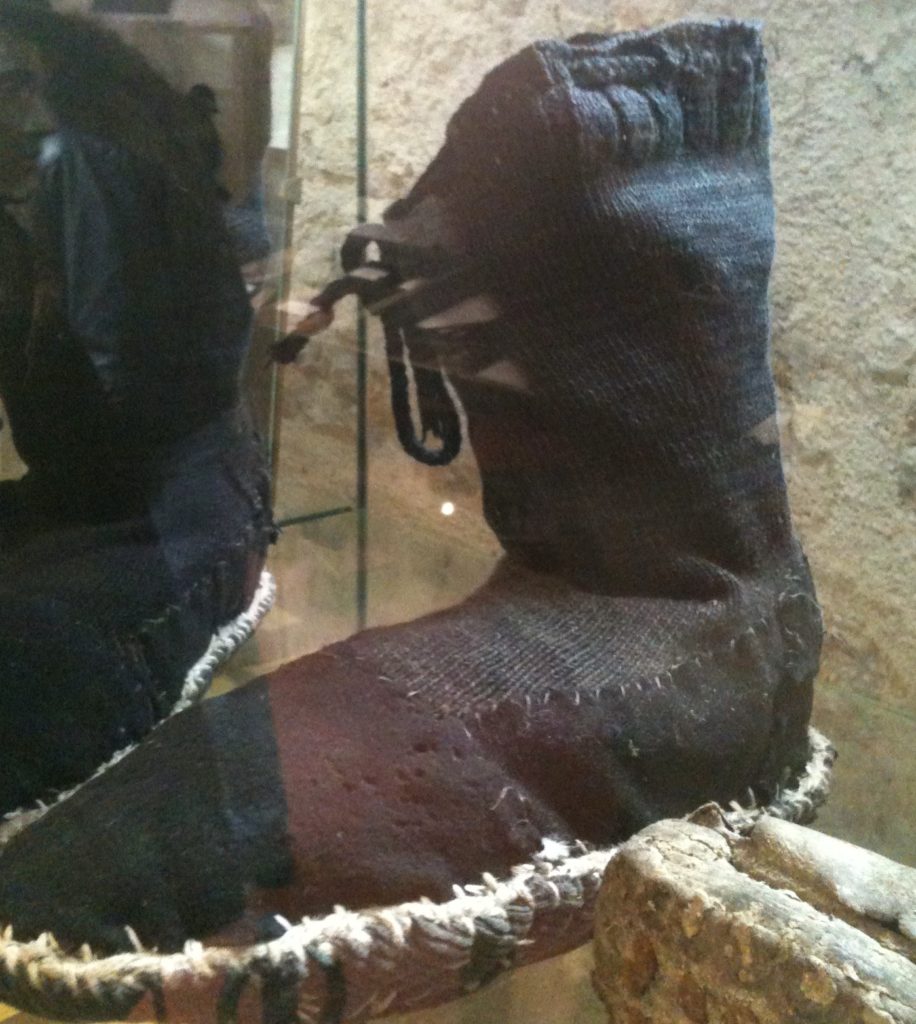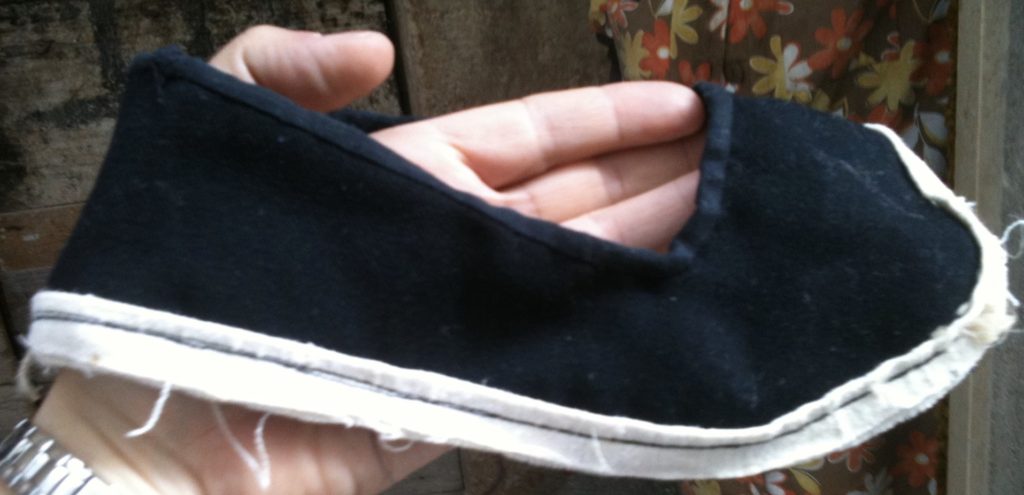The story of seasonal moving of flocks can be told all over the world, from the steppes of Asia to the lavender fields of Provence. The movement of sheep makes the news in the modern era, as from time to time, when sheep are herded through the streets of modern European cities such as Barcelona or Madrid.
Since pre-Roman times in what is now Italy, shepherds and their faithful dogs led flocks of sheep from high to low pasture with the coming of colder weather in September, and back to the highlands in the spring in May or June along paths that remain to this day. The most famous of these paths, Tratturo Re or Tratturo Magno (the great or king sheep road), wound southward from mountainous Aquila out to the Adriatic coast, and then inland to Foggia, where shepherds paid a tax on their flocks as they entered the region of Puglia. The annual trek, called a transumanza or, transhumance in English, ended in a large fair, this being an opportune time to sell, buy, trade, and inspect the livestock.
The tratturi were well-known and well-traveled. Churches, inns, and way-stations were built along the way to serve the shepherds and traders. Even the branches off the main paths had specific names, like tributaries of rivers, or in this case, rivers of livestock.
These wool roads were the physical signal of a sheep culture, and there were also cultural markers in the ways in which people molded their lives to the industry of sheep and wool production. Just as there was a great market fair upon the arrival of the flocks wintering in Puglia, the opposite took place in the villages when the shepherds left their homes in the fall, In the highland hometowns, festivals were held in the villages of the region to mark the departure of the man, and the ensuing separation of families, which resulted in the assumption by women of all the functions of life and work in the village.
An early visitor to the town of Scanno described a countryside populated and worked by women:
And women, always women, were working away with rakes or sickles, their heads tied in handkerchiefs, their black skirts blowing in the wind, their legs in thick black knitted stockings, and their feet in hob-nailed boots. Old and lined at thirty, and bearing upon their shoulders, with apparent willingness, the whole burden of life, those patient women amazed me by their industry. Sometimes they would be seen walking behind a laden donkey, not idly but knitting as they walked. [1]
Before the World War 1, 27-year-old Estella Louisa Michaela Canziani and her father travelled from London to visit this region, called the Abruzzi, in Italy. Their particular mission was to collect folklore and lifeways, the songs, and stories of the people. They were warned that the Abruzzeze countryside was a wild and dangerous place, populated by bandits and surly, unhelpful village folk. While they did not encounter the first, Canziani’s narrative proves the second to be true more often than not. Estella sketched and painted and became known to the villagers as she travelled, which helped break down some of the conversational barriers.. After the War, Canzani published her stories and illustrations as Through the Apennines and the Lands of the Abruzzi Landscape and Peasant Life: Described and Drawn by Estella Canziani.
Both Canziani and another Englishwoman predecessor in this type of tour, Anne MacDonnell, noted down verses from songs that show us how much the villagers organized their own lives around the economies of sheep culture:
“Marito me’nce pozzi ariveni, Vuo’bene chiu all’ aino che no a mi.”
Mogliera me’ te puozze consula, senza dell’ aino non se po’ campa..”
La luna de settembre ha ju cierchie tunne A revederce, Bella, tra maggie e giugno.
Husband, canst thou not return, Thou lovest more the lamb than me.
My wife, thou canst console thyself, without the lamb we cannot live. [2]
The September moon is round. Adieu fair one, till ‘tween May and June.[3]
Canziani also faithfully noted ever-present knitting as a mainstay of the everyday activities in the towns. At a fair in Aquila, she observes peasants from all over the region, hailing each other in a variety of dialects, each with a different mode of dress, and all wearing charms against the evil eye. She notes:
They sat on the ground all along the edge of the piazza, some cross-legged, others with their knees nearly touching their chins; some sat on boxes, but they mostly seemed to prefer the ground, and others stood chatting, bargaining, and knitting. The usual way of carrying knitting when it is not being done is to stick the pins through the hair or handkerchief on the head, and one often sees women walking about and going into church with half a stocking on top of their heads and the loose pins either behind one ear or stuck through the hair.” [4]
The stockings they were knitting might be the ones she describes as half red and half purple with white toes and heels[5], which, she says, were worn throughout the Abruzzo with soles and laces of leather. In other chapters, she describes a long white sock, again with a leather sole and laces to the knee called coce.[6] In the village of Capracotta, Canzani describes women climbing out their second story windows when snow blocked their doorways wearing thick, black stockings over their boots to give them traction in the snow.
In this hardscrabble life, there was little whimsical magic, perhaps, but there was superstition. Scannese jewelry is famous for charms to ward off the evil eye. Canzani described a scene that took place in Scanno, in which a somber-dressed mother of a bride knit during the festivities, holding the yarn at tension by a specially-designed pin on her bodice. The silver knitting pins were in the likenesses of frogs and horns to ward off the evil eye.[7]
Women in the town of Scanno made leather-bottomed chezette, calze ferrate, translated as iron socks. There are examples in the display cases at the Museo della Lana, Scanno, Italy. In nearby Anversa degli Abruzzi, the author was shown an unfinished specimen, below, that is quite close to the construction of the Scannese version in the museum.


| The Transhumance |
| The Fête de la Transhumance in St-Rémy-de-Provence, Southern France, occurs in the spring, although the sheep are trucked into the city where they are paraded around the center before taken to higher pasture. Similarly, in Spain, a few hundred sheep are brought to the center of Ripoll in Northern Spain for the annual Fiesta de La Lana y la Campesina Boda (Wool & Country Wedding Festival) in May. There is a ceremonial shearing in the plaza, after which the first wool off the sheep is used to stuff a double mattress. A marriage is then celebrated at the nearby monastery – sometimes ceremonial, sometimes real. The fall migration involves an annual parade through the streets of the country’s capitol city of Madrid. |
| In Italy, the paths that were used for the Transhumanza are literal wool roads. Some of them still exist today as marked paths. The tratturo was a path with stone walls on either side to keep the sheep headed to the pasture of the season. The three longest routes were each more than 200 km, with churches and resting spots along the way for the shepherds. Two of the trails end in Foggia, where, in 1447, Alfonse I of Aragon who ruled this part of Italy collected taxes on sheep at the Dogana della Mena delle Pecore, or, the Customs House of the Sheep. This taxation continued for 400 years until the French took over the region. Because of the mandatory tax collection, all sheep ended up at the customs house at a great fair once a year at which livestock traders and wool buyers could inspect the flocks and haggle with their owners. The Great Fair of Foggia became a major wool market in Europe from the mid-1440s onward. Although it has had its ups and downs as an agricultural event, it still takes place as the Fiera Internazionale dell’Agricoltura/International Fair. |
[1] Through the Apennines and the Lands of the Abruzzi Landscape and Peasant Life: Described and Drawn by Estella Canziani Houghton Mifflin Company; The Riverside Press Cambridge: 1928.
[2] Song from Capracotta, Abruzzo from E. Canziani
[3] From Anne MacDonell In the Abruzzo, 1907.
[4] Canziani, p 167.
